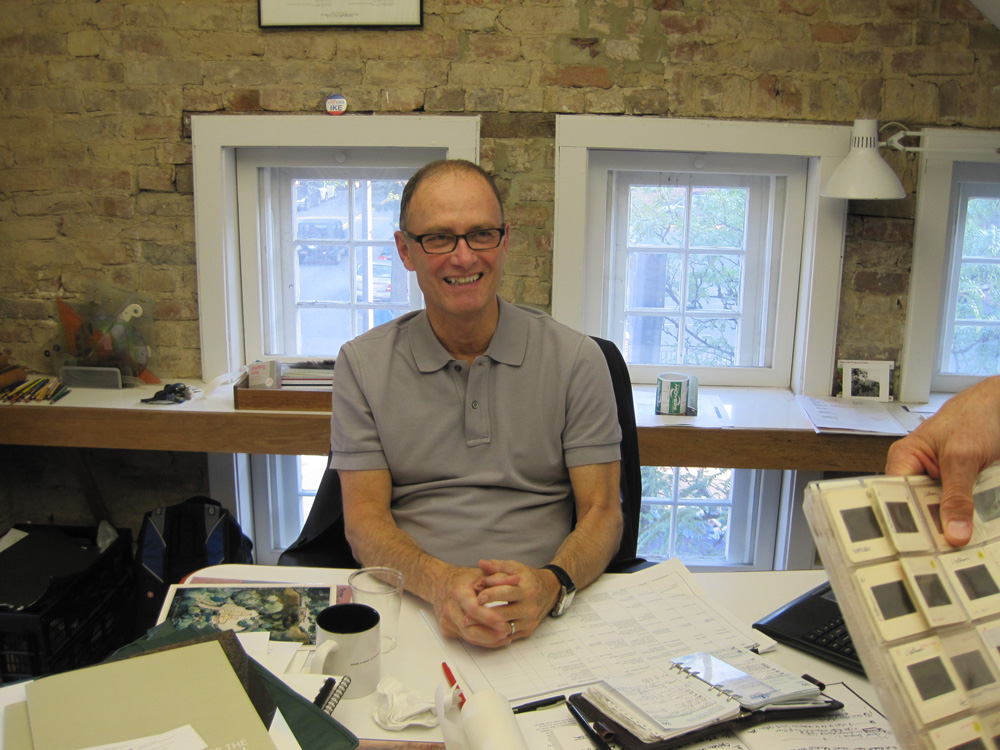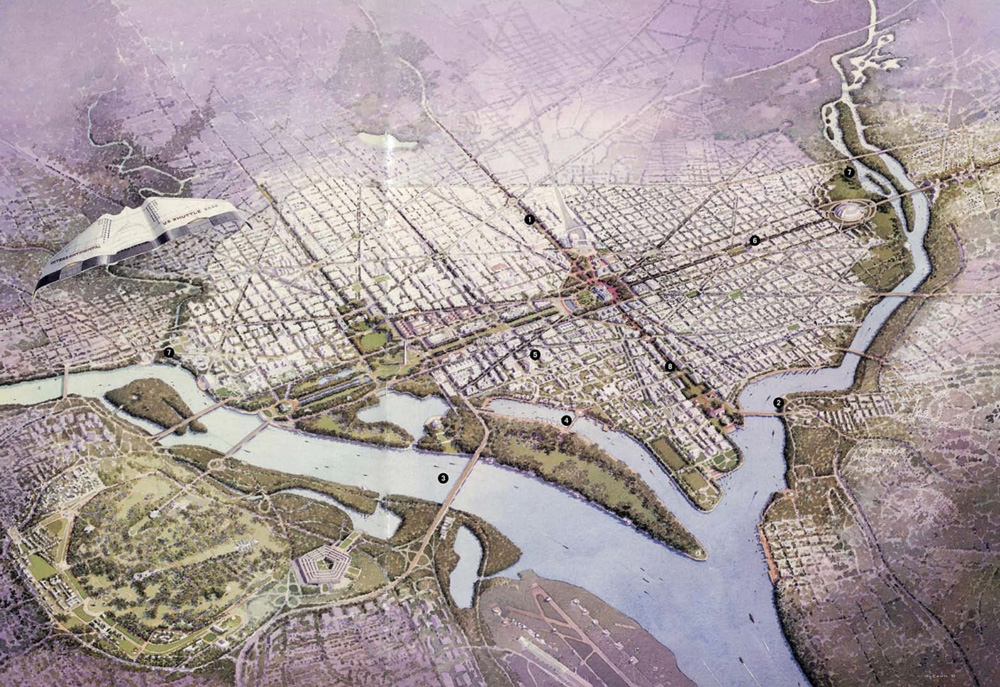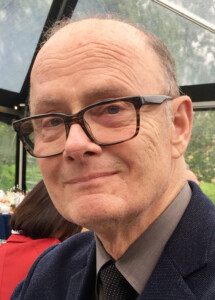
Joseph Edward Brown (MLAUD ’72), whose unrelenting promotion of landscape architecture influenced several generations of practitioners, died on Thursday, October 31st, in San Francisco after an extended illness. I was fortunate to have witnessed the loving care his spouse, Jacinta McCann, gave him over the long years of his physical impairment—one of the truest measures of human devotion I have ever encountered.
In my lifetime, there was no stronger champion for the striving achievement of landscape architecture practices than Joe, a tireless man whose energy could not be dampened. The story of his advocacy for the field necessarily starts with the formation of EDAW in 1973, when Garrett Eckbo, Francis Dean, Don Austin, and Ed Williams reincorporated the small but powerfully innovative firm that Eckbo and Williams had originated two decades earlier. EDAW expanded steadily on a wave of emerging environmentalism, delivering new scales of environmental planning including the expansive California Urban Metropolitan Space Study of 1965 and a similar plan for the state of Hawaii in 1970. Joe joined EDAW in 1974 in California and, seeing the East Coast as an opportunity, soon opened the firm’s studio in Alexandria, Virginia, in 1976.
It was in the District of Columbia that Joe developed his full-throated voice for visibility, credibility, and influence for the discipline. Through sustained and strategic promotion, the Alexandria office became a powerhouse in Washington. EDAW’s Alexandria principals assiduously studied how design intersects with governance and public process—the only key to success for anyone working in the capital city. They conquered the art of persuading and winning with agencies including the National Capital Planning Commission, the US Commission of Fine Arts, and the National Park Service. The DC projects were significant, from the Monumental Core Master Plan, Constitution Gardens, the Dwight D. Eisenhower Memorial, and the National Museum of the American Indian, to perhaps the ultimate prize in planning the capital city: Joe’s leadership role in a mega-team for the all-important plan for the District and beyond, called Extending the Legacy, in 1997.

Meanwhile EDAW was expanding globally. In 1992, Joe took the reins of the firm as president; satellite offices thrived in Atlanta, Sydney, and London. By 1994, it was a 400-person entity banking on new global markets including Europe, China, and the Global South. By 2000, EDAW stood at 1,000 people. In 2005, EDAW joined the AECOM companies, one of the world’s largest infrastructure consulting firms. With this merger, EDAW’s landscape practice would gain hold on an unlimited market worldwide.
EDAW kept its identity within AECOM for nearly a decade, but in 2009, after its own legacy of 50 years of transformational practice, the firm was consolidated into AECOM. Many viewed this as a diminishment—it was sad to see the Eckbo Dean Austin & Williams legacy retired. But Joe saw his team of landscape architects working on the largest and most complex projects throughout the world. He led AECOM’s Planning, Design, and Development team, and became the Chief Innovation Officer, prior to his retirement in 2016. Joe had moved beyond visibility and credibility for the field; he was satisfied that landscape architects were leading and collaborating everywhere, and he continued to motivate everyone he knew. He was more than once heard saying, “Make big plans now . . . or be prepared to make little plans for a small future.”
An anecdote: In the late 1990s and into the early 2000s, Joe did some teaching at the GSD, mostly workshops in core studios and guest appearances in classes, and we spent a bit of time together, sharing studio reviews and occasional dinners. At the time, I taught the MLA II Proseminar, which aided first-semester students in the shaping of an academic platform for their two years in the program. I’d invited Joe to speak with the class about his career path and his views on practice. Joe headed to the blackboard after a short introduction. There he wrote “EDAW” and “Reed Hilderbrand” across the top. He said he wanted to talk about where this class of students wanted to work once they’d finished their MLA degrees. He explained that if you wanted to have impact, EDAW would take you places you’ve never imagined, where you can design anything. If you want to work in an atelier, then you should work for Gary’s firm; you will really learn how to design, but the impact will be smaller. A friendly hour-long debate ensued. His voice, forever a bit on the raspy side, was always intense, directive, and encouraging. Joe and I remained good friends. We both liked our respective corners of the world.

Whether he saw you as a boutique artist or a large firm collaborator, Joe always seemed to be as keen on your firm’s success as he was on his own, as a range of practitioners attest. Gerdo Aquino FASLA (MLA ’96) of SWA has noted that “Joe was an important mentor to me in my early professional years at EDAW and SWA. He was the one who talked me into attending graduate school—said I wouldn’t regret it. He was a north star for so many of us.” Cindy Sanders FASLA of OLIN said, “Joe was my most significant mentor in the business of the business. He taught me nearly everything I now know about the business of landscape architecture. I was a good student of his academy.” And James Burnett FASLA of OJB observed, “He wanted us all to make it and prosper because he understood how important it was for our firms and our profession to be strong.”
Joe received many accolades in his career, including the 2009 American Society of Landscape Architects (ASLA) Medal, the association’s top honor. That same year—the year of the full merger into AECOM—EDAW received the ASLA Firm of the Year award as well. The most significant recognition in my view, and I like to imagine possibly for him, was Joe being presented with the Landscape Architecture Foundation Medal in 2019. The ceremony in Washington, DC, was deeply affecting, a moment those in attendance will never forget. While Joe was by then barely able to speak, he was fully aware, with Jacinta at his side, that all in the room felt a great sweep of emotion and gratitude for his determined and tireless contributions to the advancement of landscape architecture.
Joe’s dedication to furthering the discipline of landscape architecture persists. Established in 2017 with Jacinta, the Joe Brown and Jacinta McCann Fund for Faculty Research provides support for both new and ongoing research projects conducted by junior faculty in the GSD’s Department of Landscape Architecture or Department of Urban Design, with a particular interest in interdisciplinary projects.